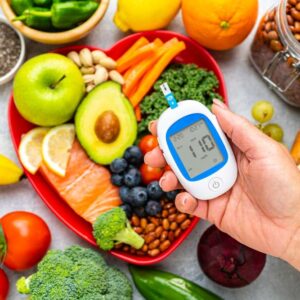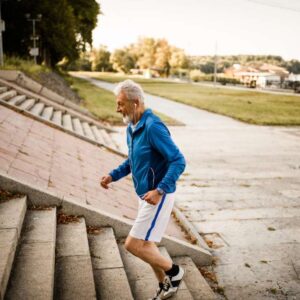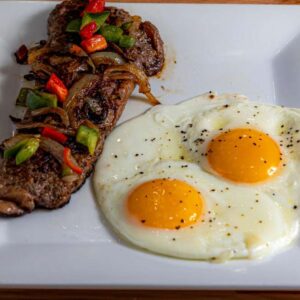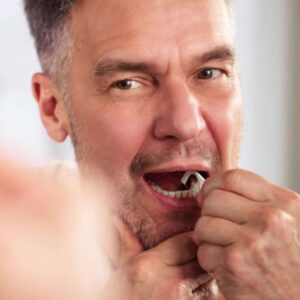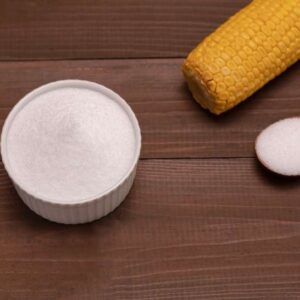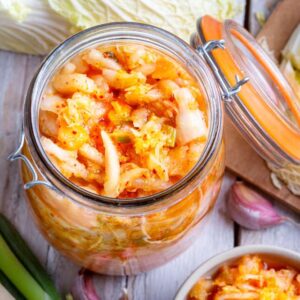
Hit the Blood Sugar “Sweet Spot” (and STAY!)
When you’re diabetic it seems like EVERYONE (you, your loved ones, your doctor, and heck, sometimes even perfect strangers) become laser-focused on your DAILY blood sugar readings.
And they are an important indicator of how you’re doing, of course. But yesterday I revealed the best way to get a TRUE handle on the disease. And that’s by tracking your hemoglobin a1c (a1c).
The hemoglobin a1c (a1c) is a simple blood test that measures your average blood sugar levels over the last three months.
Focusing on this ONE number can give you the BEST control and the lowest possible risk of heart problems and other diabetes-linked complications.
Today, I’ll reveal the “a1C sweet spot,” according to a breakthrough Korean study… and three simple steps to reach it and STAY there.
When you don’t have diabetes, you want your A1c to be below 5.7 percent. The higher it gets above that, the more likely you’ll develop the disease. But if it’s above 6.5 percent on two different tests, you’re officially a member of the diabetes club.
And that’s where things can get tricky. Because once you HAVE diabetes, the targets are all over the place.
The American Diabetes Association, for example, says you should keep it below 7 percent. A report from Harvard stated anywhere in the 7 to 8 percent range is fine in most cases. And different docs have their own range of what they’ll accept for their patients.
But let’s step back to get a little perspective. When you have diabetes, the goal isn’t to simply hit a number, of course. It’s to stay alive and healthy.
That’s where this study shines. Because it identifies the specific A1c threshold that can send your chances of surviving and thriving—DESPITE your diabetes diagnosis—soaring.
The goal is 6.8 percent. If you fall below that when you have your a1c checked, you’re doing great. Above that, the risks start to climb. And when you hit 7 percent, your odds of a heart attack jump by 27 percent and stroke by 28 percent.
If you haven’t yet tried to reverse your diabetes, it’s worth a try. With a few simple steps, you can send your a1C plummeting and you may no longer need to take all those meds.
- First up is diet, of course. Eliminate added sugars, slash carbohydrates, and dump ultra-processed foods. A low-carb “keto” style diet is perfect for this. On the keto diet, you drastically reduce your sugar and carbohydrates.
- Next, incorporate some exercise into your daily routine. But remember, that doesn’t mean you have to turn into a gym rat or sweat it out for hours. A brisk walk to run errands or a guided yoga or stretching routine you find on YouTube counts, too.
- And finally, add in some natural blood-sugar-supporting supplements such as berberine, chromium, and cinnamon extract.
This approach can dramatically reduce your blood sugar, pushing your a1c into that golden zone of 6.8 percent or less. And instead of needing more drugs to control your diabetes, you might even be able to reduce or TRASH the ones you’re taking.
But don’t do this alone. Keep your doc in the loop. He can monitor your progress and help you adjust your meds along the way.
P.S. Lucky #13 slashes diabetes risk 40%!
Source:
“Association of Prestroke Glycemic Control With Vascular Events During 1-Year Follow-up,” Neurology, 8.21, 10.1212/WNL.0000000000012729; DOI: 10.1212/WNL.0000000000012729
Written By Dr. Scott Olson, ND
Nearly 25 years ago, failed mainstream medical treatments left Dr. Olson in constant pain – and his health in ruins. And that’s when he did something REVOLUTIONARY. He began his career in medicine – and dedicated his life to uncovering the true, underlying causes of disease.
Through his innovative medical practices in Tennessee and Colorado, Dr. Olson has helped cure countless seniors from across America of arthritis… heart disease… diabetes… and even cancer. All without risky prescription drugs or painful surgeries.
View More Free Articles
Stop Obsessing Over Diet Trends
Can we stop with the endless diet debates already? Every other week there’s a new headline shouting about which diet is best for weight loss, heart health, or diabetes. Paleo, keto, low-carb, high-protein… it’s exhausting. And now, a new meta-analysis is out comparing the Mediterranean diet, the DASH diet, and something called AHEI (that’s “Alternative...
A New Reason to Ditch Processed Junk
If you’ve ever walked the inside aisles of your local grocery store and thought, “This is all just junk,” your instincts were spot on. A new study published in the journal Thorax just added another red flag to the list of dangers linked to ultra-processed food—a 41 percent higher risk of lung cancer. That’s right....
When Being Winded on Stairs Is Serious (And When It Isn’t)
I had an athlete visit me recently because he experienced shortness of breath while climbing stairs. He is in great shape, so he was worried about what it might mean. “Doc,” he said, “I run five miles three times a week. Why am I huffing and puffing after two flights of stairs?” His concern is...
Study EXPOSES Hidden Danger Lurking in Your Car
We think of our homes and cars as safe havens. But according to a startling new study, they may be flooding your lungs with microscopic plastic particles—every single day. Researchers in France recently found that adults inhale an average of 68,000 microplastic particles daily from indoor air alone. To put that in perspective, that’s about...
Mailbag: Is Modern Food Making You Snore?
“What can cause snoring, and is there a way to correct this issue?” —Seeking Silence Hi Seeking, Snoring happens when the soft tissues in your throat relax and vibrate as air passes through during sleep. While several factors can cause snoring—from sleep position to nasal congestion—I want to share one trigger that might surprise you....
Simple Food Swap SLASHES Dementia Risk 28%
Let’s be honest… who would jump at the chance to cut their dementia risk by 28 percent. And no, you don’t need to run marathons, survive on broccoli, or learn to play the zither (whatever that is) to make it happen. All it takes is one easy swap—something that’s probably already in your refrigerator. Researchers...
This SMART Floss Exposes Hidden Health Danger
Scientists have created dental floss that doesn’t just clean between your teeth—it also tracks your stress while you’re flossing. Now, I know what you’re thinking… “Great—now even flossing is going to stress me out by telling me how stressed I am.” But this fascinating new tool from Tufts University could be a game-changer for understanding...
Is This "Safe" Sweetener Damaging Your Brain?
The headlines are alarming… “Popular Sugar Substitute Linked to Brain Cell Damage” and “Erythritol Could Damage Critical Brain Barrier” are just two of the dozens I’ve spotted recently. But before you toss every sugar-free product in your pantry, let’s take a closer look at what this study actually shows—and what it doesn’t. The latest research...
This Summer Threat Could SPIKE Your Blood Sugar
Picture this… It’s another scorching hot summer day. You crank up the air conditioning while watching the weather forecast, which predicts yet another “record-breaking” heat wave. It’s starting to feel like just another miserably uncomfortable summer. But what you might not realize is that—if you have diabetes—those rising temps could do far more damage to...
Move Over Yogurt—5 Foods That Pack MORE Probiotics
Let’s talk about your gut. The microbiome is the collection of trillions of bacteria and other tiny organisms that live in and on your body—especially in your gut—and help keep you healthy. I’ve written often about how vital it is to maintain a healthy microbiome. And you might have dutifully added yogurt to your shopping...
